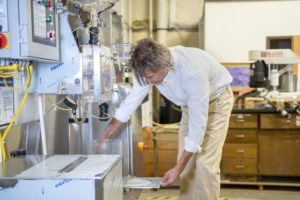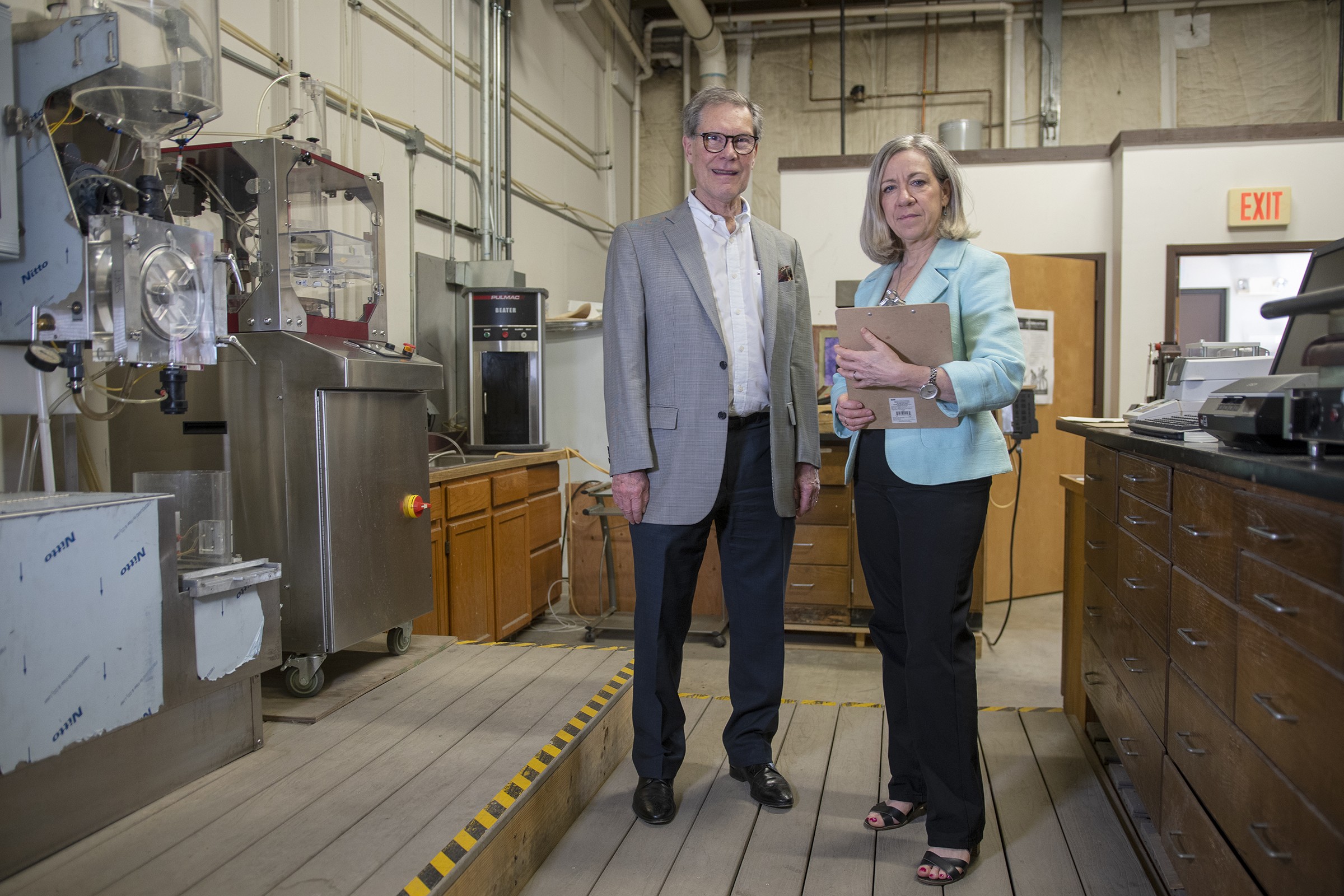Pulmac Systems International Brings the Information Age to Pulp and Paper
The pulp and paper industry is not known for its cutting-edge technology or pushing the frontiers of innovation. In fact, little has changed in the 150 years since wood pulp was first used to make paper at the Smith Paper Company. But where others may see an aging industry, Pam Cowan, chief marketing and financial officer at Pulmac Systems International, sees one that is ripe for change.
Pulmac was founded 50 years ago by Pam’s grandfather, Elijah Cowan, an engineer who consulted with the pulp and paper industry to improve efficiency. Over the decades, the business was passed down through the generations, evolving to meet the needs of the industry it served. Pam’s father, Wavell, transformed Pulmac into a manufacturer of instruments that improve paper quality and mill productivity, many of which the company still sells today. More recently, Pam, along with her brother, Joff, and husband, Bob, brought the company into the information age, incorporating technologies that allowed mills to use data to operate more efficiently and produce stronger, lighter materials.
“Our core competency has always been fiber knowledge,” said Pam Cowan, “and our mission now is to use that knowledge to move the industry toward a culture of innovation.”
Improving Efficiency and Sustainability
With increased demand for lighter, stronger materials that reduce a company’s shipping costs and carbon footprint, and in the context of corporate America’s move toward sustainable use of both energy and raw material, Pulmac is focusing on technologies that allow mills to diagnose and improve the qualities of the end product.
“Imagine you are Anheuser-Busch and you need to buy boxes to move your product around the world,” explained Cowan. “You want those boxes to have compressive strength, tear strength, and bonding strength—and you want them to be thin and light so they don’t add weight to your shipping costs. That all starts with the quality of the fibers in the pulp, which we can diagnose and adjust before the pulp hits the press.”

Tim Jarvis, Pulmac’s technical manager, works at the company’s production facility in Colchester. Photo by Erica Houskeeper.
In 2015, Pulmac developed the FiberRouterTM, a data and equipment system that allows mills to produce paper using 30 percent less raw material by removing weaker fibers from the pulp. In addition to producing a stronger product, the FiberRouterTM promised reduced waste, improved utilization of both pulp and recycled material, and reduced energy costs. The company saw an opportunity to commercialize the new technology and turned to Janice St. Onge at the Flexible Capital Fund for funding.
“At that time, my brothers and I were not in agreement about the direction of the company,” said Cowan, “and most traditional lenders would look at the family dynamics and say ‘no thank you,’ but Janice looked beyond all that to the core value of our product and stayed at the table. We would not have survived if she had not shown that confidence in us.”
The Flexible Capital Fund invested a $200,000 term loan plus a royalty kicker, allowing Pulmac to complete a lab trial and put into motion the next phase of testing, which led to a patent for the FiberRouterTM in 2018, a second patent in 2019, and a third in 2021. A fourth patent is expected later this year.
Though the first sale of the $5 million dollar piece of equipment fell through, Cowan had a second buyer from Montreal seriously interested—and then COVID-19 hit. “Almost immediately, Americans were not able to cross the border,” she said, “and we could not get there to close the deal. It almost sunk us.”
Pulp and Paper 4.0
Although sales dropped by 50 percent during the pandemic, the company did not sink. In fact, the global “pause” gave the company a chance to take a step back and evaluate their business. Cowan participated in regular calls organized by the Flex Fund to tap into the support of other entrepreneurs and leaned into the fresh perspectives offered by her advisors and board members, including St. Onge.

Bob White and Pam Cowan visit their production facility in Colchester. In 2016, Pulmac developed the FiberRouterTM, a data and equipment system that allows mills to produce paper using 30 percent less raw material by removing weaker fibers from the pulp. Photo by Erica Houskeeper.
“We had some time to look at our products and to think about the common thread, which is data,” said Cowan. A strategist by nature, Pam’s husband and business partner, Bob, began to explore ways to organize data for mills that would allow them to identify and solve small production problems, which she refers to as “pulp and paper version 4.0.”
Today, the company has a new supply chain software that keeps track of every step of the process from the purchase of raw materials through to loading boxes on the truck, allowing mills to quickly locate and resolve production problems. The data is all collected through smart devices and streams the information back to mill owners.
“Helping the mills collect data also informs our own thinking and product development,” said Cowan. “The more we understand our customers’ pain points, the better we can serve them.”
For the first time in a while, she is optimistic about the future. “2019 was a difficult year, and then the pandemic hit,” said Cowan. “When you’re running a company, you’re constantly on the treadmill. The pandemic allowed us to take a breath and start moving in an exciting direction that is about sustainability and innovation. We came out of the pandemic ready to run and energized about our future.”
About the Flexible Capital Fund
The Flexible Capital Fund, L3C is a Community Development Financial Institution (CDFI) and impact investment fund that provides flexible risk capital in the form of subordinated debt, revenue based financing (also known as royalty financing) and alternative equity structures, to growth-stage companies in Vermont and the region’s food systems, forest products, and clean technology sectors.
Read More Stories Like This:
- From Brownfields to Brightfields: Encore Renewable Energy Reimagines Sites for Solar
- Northern Reliability is Moving the U.S. Toward Renewables, One Battery at a Time
- Grow Compost Grows a Business
- Localvore App Helps Feed Vermonters During Pandemic
- From Hospice to Good Health, Plant-Based Eating Inspires a Business
- Trust Your Gut: Aqua ViTea Founder Jeff Weaber on Growing an Idea and a Business
- Pressing Apples and Pressing for Prosperity in Vermont’s Northeast Kingdom

